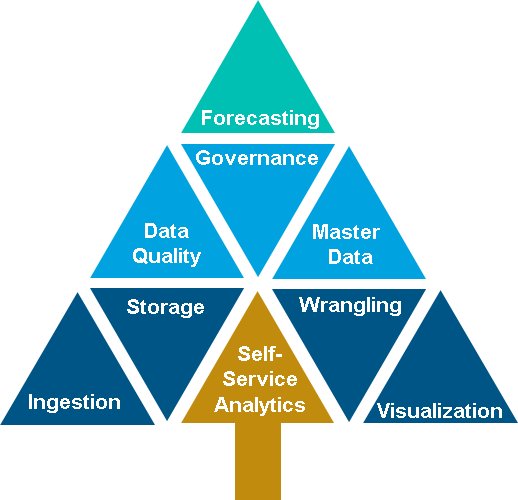Designed specifically for the challenges and modeling approaches of the life sciences industry






















- Blogs
- How Can Open Source and Self-Service Analytics Help Pharma Forecasting?
The verdict is in: open-source software libraries and self-service analytics are going to transform the way we do commercial forecasting. And the sooner we start using their capabilities in the life sciences, the better.
Open-source software works on a simple premise that when someone builds a piece of software, they share the source code with the world. That means any user can take that code library and use it as part of their application, often in ways that weren’t even imagined by the writer.
Today, there are tens of thousands of coders writing in open-source friendly languages like Python and R. And these are not just ‘toy projects.’ They are having significant impact on many areas of software development – including forecasting. In 2018, engineer Slawek Smyl won the prestigious M4 forecasting competition by building a machine learning tool in Python that is now available online for anyone to view and download.
Open-source is a powerful catalyst for innovation and value creation in many other industries, and it has helped improve trend-based forecasting around the world. Now it’s time to start looking at how open-source algorithms can help pharma build a better commercial forecast.
Forecasting in the age of Self-Service Analytics
Today, “self-service analytics” tools are making data wrangling and machine learning more widely accessible for all. Online tutorials and ‘how-to’ guides are allowing users with little or no coding background to do advanced number crunching. But how do these ‘self-service analytics’ solutions get integrated into the forecasting process?
Proprietary forecasting packages - as well as Excel - don’t allow this type of integration. They’re built for stand-alone use, without the ‘hooks’ needed to link to other systems. It’s a big problem with forecasting software in the life sciences, and in today’s fast-moving world, it’s holding back much-needed change.
A new breed of forecasting tools that allow self-service analytics to be ‘plugged in’ could be a game changer for the industry. It means you could independently oversee your forecasting platform’s evolution to meet your company’s specific needs, rather than waiting for updates from a software company that charges for every change. The shift to open-source would expand the shelf-life of your platform, while giving your team the flexibility to mold the tool around whatever new data or forecasting strategies you want to use.

Instead of forcing forecasters to spend hours digging through data that your current platform can’t analyze, you could build your own algorithm to manage this part of the forecast funnel. And if you don’t have a developer or data scientist on staff, you can easily outsource development or utilize algorithms that other users have built – because with open-source software, everything is shared. This approach has the potential to free forecasters from the endless drudgery of manual analysis, thereby elevating their strategic value and enabling them to look deeper behind those numbers.
The future of forecasting: plug-in open source algorithms
At IQVIA, we’ve developed a tool called Forecast Horizon that we think is going to change the forecasting paradigm. It allows you as a user to integrate any kind of Python or R code into the forecast process, including the use of open-source code as well as paid libraries. That means it comes with a set of the best forecasting algorithms currently available – but allows you to change those algorithms as new ones come out, or even build new ones yourself.
Forecast Horizon’s seamless integration of Python and R allows pharma forecasters to build richer forecasts by using pre-built algorithms (including machine learning models) within their current forecast designs. We’ve thought through how to integrate these languages and their open source libraries into the forecast funnel, as well as feed data from your various enterprise systems.
One such example is a top-10 pharma manufacturer who wanted to build a real-time forecast. They built a series of python scripts to download weekly sales data for their products and competitors from an internal data warehouse. Self-service analytics were used to consolidate payer and provider-level data, remove outliers, and trend it. The results were then automatically fed into the forecast engine, producing new weekly forecasts automatically.
From trending, to data smoothing, to outlier detection and neural networks, there is a rapidly growing set of algorithms to help forecasters bring speed and precision to their work. It is giving them a whole new toolbox to identify patterns that are uniquely relevant to their products, patients and physicians.
We believe the future of forecasting must include open-source options. Slawek Smyl already proved that by winning the M4 forecasting competition, beating out hundreds of commercial competitors. And we believe that by leveraging the power of thousands of developers like Smyl to build better tools, forecasters can become strategic partners in charting the future of pharma.
To learn more about IQVIA’s Forecast Horizon platform click here or contact us at ForecastHorizon@iqvia.comRelated solutions
Be proactive about growing your brand using the latest in data, analytics, and domain expertise.
Take advantage of the latest tools, techniques, and deep healthcare expertise to create scalable resources, precision insights, and actionable ideas.





